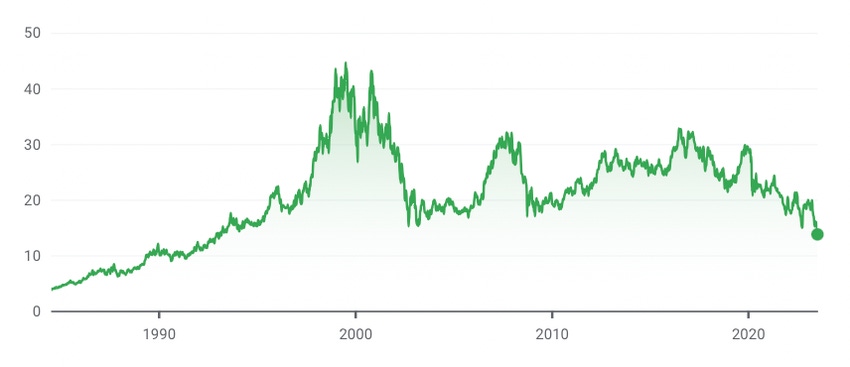Telco stocks collapse like leaden balloons
'AT&T undoubtedly has the greatest exposure to this potential issue, as its long-distance network dates back to the late 19th century,' said analysts. Verizon, Frontier and Lumen 'likely have exposure as well.'

The headlines last week were dire: "AT&T, Other Telecom Stocks Sink After WSJ Investigation on Toxic Lead Cables," the publication reported. "AT&T Falls to 29-Year Low Amid Concerns of Cleanup Costs," Bloomberg warned.
Financial analysts fretted.
"Lead sheathing ... will be a substantial long-term overhang on AT&T and the industry," wrote the financial analysts at JP Morgan in a note to investors Friday. The firm downgraded its opinion of AT&T's stock to "Neutral" from "Overweight" and cut $5 from its AT&T share-price target.
JP Morgan wasn't alone.
AT&T "could incur possible future liabilities and financial risk from the industry's historical use of lead sheathed cabling," reported the financial analysts at Citi Friday. They also lowered their opinion on the provider's stock and lowered their own price target to $16 per share.
The sweaty summer weekend didn't seem to revive investor spirits. AT&T's shares lost another 4.3% of their value in trading Monday. The operator's stock now sits below $14 per share, a low not seen since the early 1990s. Verizon's stock suffered a similar decline Monday, as did the stock of Frontier Communications and Lumen Technologies.
And the bad news isn't slowing. Several environmental groups called for the "immediate removal" of lead-covered telecom cables accessible to children, according to The Wall Street Journal.
Assessing the damage
The WSJ has published a series of detailed, lengthy articles on aging telecommunications cables that may have hazardous amounts of lead. According to the publication, "telecom companies left behind more than 2,000 potentially dangerous lead-covered cables under water, in soil and overhead. Many more are likely to exist."
Some analysts appear to be at a loss as to the extent of the problem.
"How big a deal is this? The unsatisfying, but honest, answer is that at this point we have nothing but unknowns to work with and no real way to quantify the companies' exposures," wrote the financial analysts at MoffettNathanson in a report Monday.
"It is difficult to quantify the situation at this time. While 2,000 cables sounds very manageable, we do not know the breadth of WSJ sample size; meanwhile the article notes that telcos have previously acknowledged 'some older metropolitan areas may still have over 50% lead cable,' suggesting the amount of lead-encased cables could be enormous. If so, the cost could be in the tens of billions of dollars," wrote the financial analysts at TD Cowen in a Sunday report.
But most agreed that AT&T will bear the brunt of the fallout.
"AT&T undoubtedly has the greatest exposure to this potential issue, as its long-distance network dates back to the late 19th century. Verizon, Frontier and Lumen likely have exposure as well of an unclear amount," wrote the analysts at Wells Fargo on Sunday. "The fear, of course, is that addressing the lead cable issue could divert valuable capital (and resources) from projects like fiber-to-the-home and tower upgrades. It will certainly be a topic of focus around Q2 earnings, but we also don't expect much clarity for some time."
Related posts:
— Mike Dano, Editorial Director, 5G & Mobile Strategies, Light Reading | @mikeddano
About the Author(s)
You May Also Like











